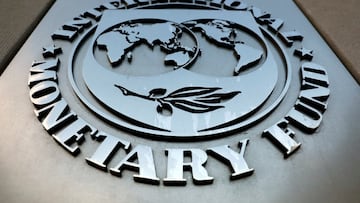Top 20 countries with the highest national debt on 2023: Where does the US rank?
Countries around the world are feeling the pressure of their debt as central banks increase interest rates. Global ranking on national debt...


Central banks worldwide are increasing interest rates, putting pressure on countries with high public debt. Emerging markets and developing economies face the most significant threat in the high-rate environment. Many of these countries struggle with limited investments and spend a significant portion of their national budget on repaying debt. This problem has been exacerbated by the fact that numerous countries have taken on record high levels of debt in the past decade, which threatens the financial stability of their economies.
According to the World Bank’s latest Global Economic Prospects report, low-income countries are spending approximately 3 percent of their GDP on programs that support their most economically vulnerable citizens, while the interest on public debt can amount to as much as 20 percent of public revenue in some of these countries. As economies battered by the economic impacts of the covid-19 pandemic regain their footing, higher interest rates, coupled with persistently high inflation, are “leaving [governments] with little fiscal space to cope with the next shock or make the investments necessary to revive growth.”
Countries with the highest debt-to-GDP ratios
There are a few ways that debt can be measured, but this analysis focuses on debt as a portion of a country’s gross domestic product (GDP). GDP is the total value of all final sales in an economy. This is the most common form of examining public debt.
A country’s debt is measured as a percentage of the size of its economy, also known as GDP. The countries with the highest debt-to-GDP ratios have a figure that exceeds their GDP. This means that their public debt is greater than their GDP for that year.
The United States ranks 18th on the list.
Debt as a percent of GDP [Top 20 countries]
- Japan: 214.27
- Greece: 192.41
- Eritrea: 163.77
- Italy: 140.57
- Singapore: 135.86
- Lao P.D.R.: 128.51
- Sudan: 127.55
- Cabo Verde:127.41
- Barbados: 126.83
- Bhutan: 124.79
- Suriname: 123.16
- Cyprus: 122.51
- Portugal: 118.77
- Sri Lanka: 117.66
- Bahrain: 117.59
- Maldives: 114.94
- Dominica: 110.73
- United States: 110.15
- Mozambique: 104.52
- Spain: 102.25
Related stories
The list of countries with high debt-to-GDP ratios is diverse, covering different economies and continents. It includes both large and small economies, such as the United States, Japan, Suriname, and Bhutan. This shows that debt can affect any country, regardless of its economic power or status.
Does the debt-to-GDP ratio account for changes in the interest rate applied to the debt?
If interest rates rise and the total debt owed increases while the GDP remains constant, the percentage of debt to GDP will increase. With interest rates reaching higher levels than those seen in over a decade, this ratio could begin to grow. This could lead to significant financial challenges for low-income countries in carrying out their governing mandates in the coming years.

